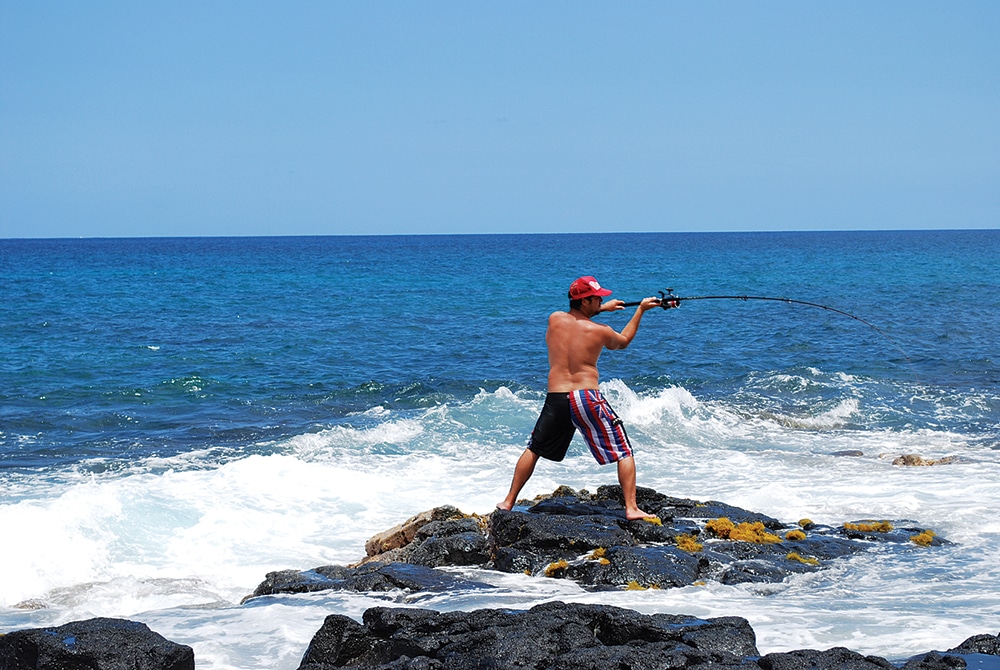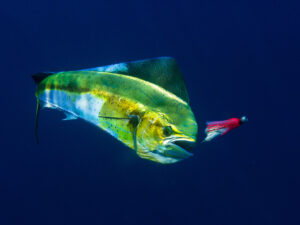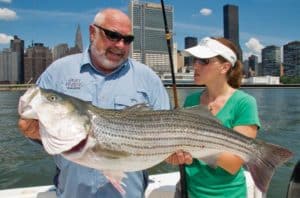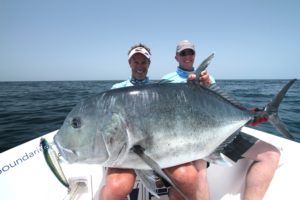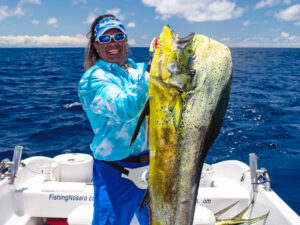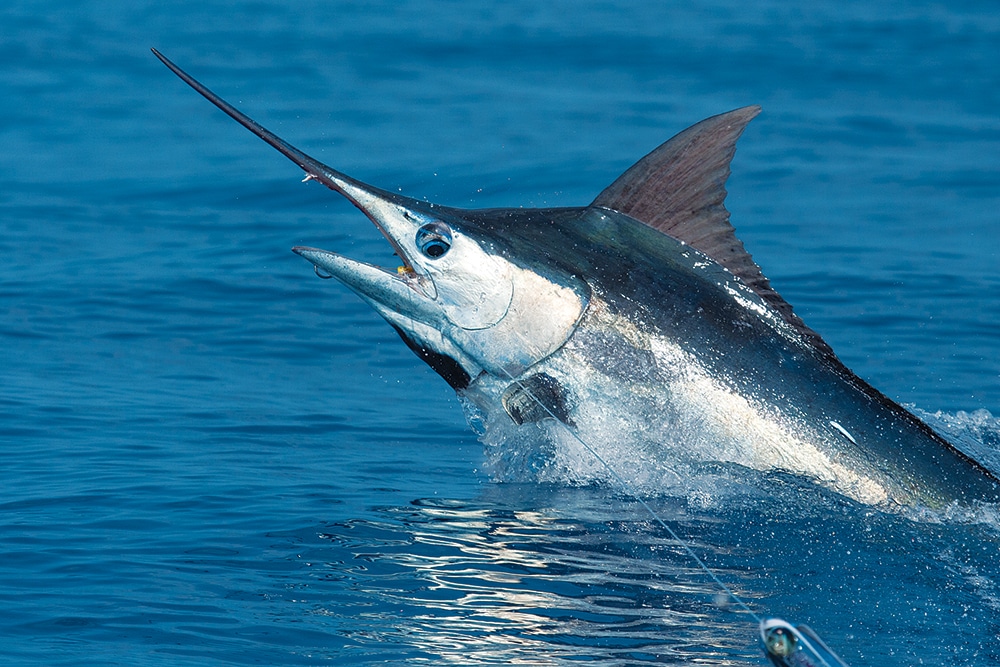
Many years ago, Kona skipper George Parker made headlines around the world when he caught the first certified, world-record grander Pacific blue marlin. Since that 1,002-pound giant in November 1954, Hawaii’s lee eddies have churned up a stream of 1,000-pound blues that continues today. Kona waters usually average two or three granders per year, along with more Pacific blue marlin IGFA records than any other sport-fishing hot spot. That parade of records continues. In March 2013, Alex Nuttall boated a 958-pound blue marlin with Capt. Chip Van Mols on the Kona charter boat Monkey Biz II to claim the IGFA women’s 130-pound-class record.
Kona’s consistent billfish success sparked a worldwide revolution in big-game fishing because these big fish were caught on lures pioneered and developed in Hawaii waters. Meanwhile, big-game fishermen elsewhere had been saying you could catch billfish only with bait. Even those doubters caught the Kona wave and started catching marlin on Kona-style lures. Kona is also the perfect starting point for novices who have never caught a fish in their lives. It happens every day, 365 days a year. Newcomers are well served by a well-maintained fleet of top-of-the-line boats and expert captains.
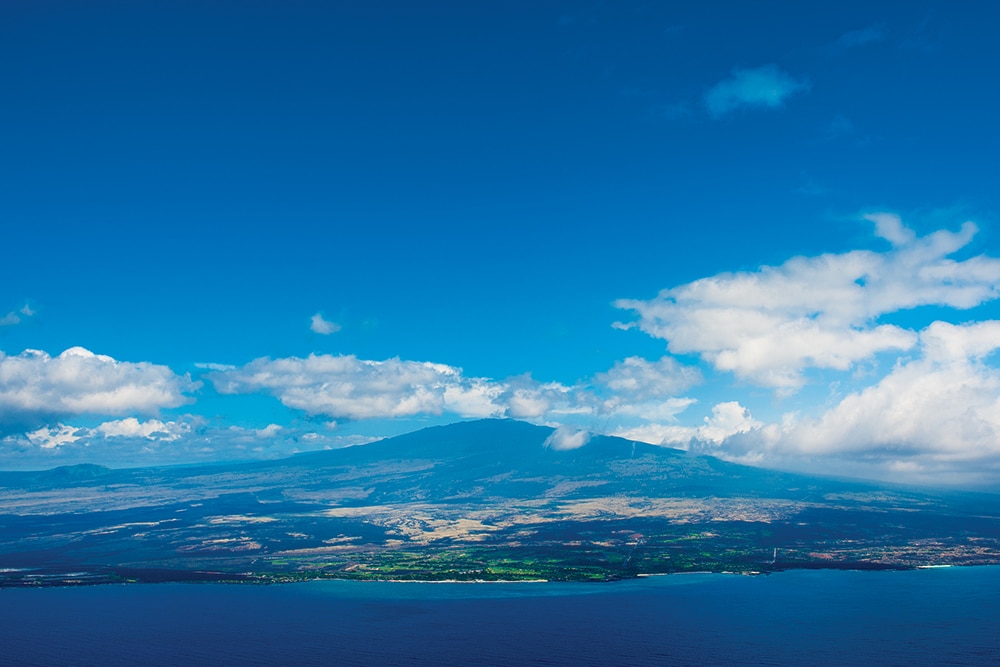
Plus, Kona’s big fish hunt in deep, calm waters near shore. The 100-fathom line is a 10-minute run from Kona’s two main fishing fleets at Honokohau Harbor and Keauhou Bay. What’s more, the biggest fish of any week is usually a marlin in the 500- to 900-pound range caught by a complete newcomer on a four- or six-hour trip. On any day of the year, a visitor can find a suitable charter and hope to catch one or more of Hawaii’s mighty four: billfish, ahi (yellowfin tuna), mahimahi (dolphinfish) and ono (wahoo).
Billfish of Every Kind
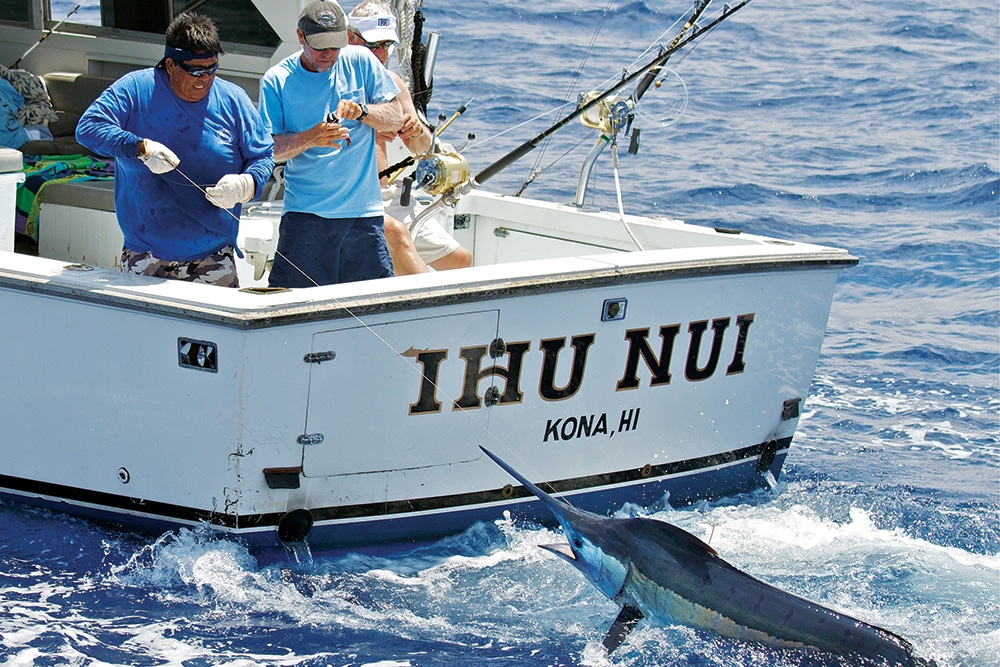
Blue marlin, black marlin, striped marlin, sailfish, shortbill spearfish and broadbill swordfish — Kona’s waters are home to every billfish found in the Pacific. But each has a different story, and you should know those stories when you make plans.
Big blues are the billfish that pay the bills in Kona. Blues of all sizes are here year-round, but they are usually most common during the summer tournament season, from June through early September. Mid-Pacific currents can supply a fresh run at any time, however. For example, sometimes April surprises offshore trollers with fish heavier than 500 pounds on every day of the lunar cycle. Catches like these show that the lunar cycle has little, if any, influence on billfishing in Kona (unlike the effect different phases might have in other fishing areas).
Kona granders have also been landed in January, March and July. March, which might otherwise be considered the offseason elsewhere, has turned up more of Kona’s historic granders than any other month, and that includes the 1,649-pound Kona all-time record in 1984. The 1,376‑pound IGFA record for 130-pound class was caught in May 1982. Indeed, granders have been caught in Kona waters every month of the year. Licensed commercial fishermen are allowed to sell blue marlin in Hawaii, but professional skippers prefer tag-and-release for clients who want to let vital fish go. In any given week, more of Kona’s blues are tagged than kept. Visitors should make their wishes known when setting up a charter.
Hawaii’s Striped Marlin
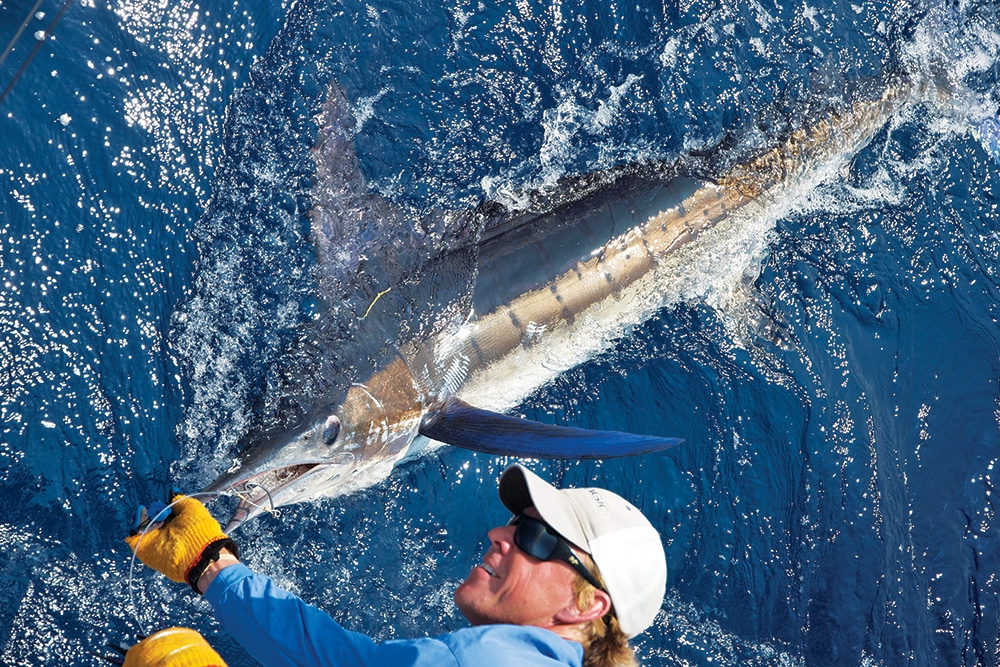
Striped marlin cruise through Kona water’s year-round, but the big run extends from December through March. The Hawaii state record, 212 pounds, turned up here at the end of March 2011. That’s big for a north Pacific stripe, which is noteworthy because South Pacific stripers max out at more than double the weight of their northern cousins. Striped marlin are most attracted to Kona when winter waters cool down into the mid-70s. During those “chilly” times, the luckiest trollers might get up to a dozen striped marlin bites, and hook about a third of them.
Those same striped marlin conditions also attract shortbill spearfish of world-record size. Kona’s frisky shortbills presently hold 16 IGFA marks for tackle as light as 4-pound-class, and even on fly gear. Record-seekers troll hookless teasers to draw a spearfish within range, and then present a lure, fly or bait on the most sporting gear available. For most visitors, however, the spearfish is a surprise catch when trolling for blues and stripes.
For black marlin, Kona is outside the normal migration range. The entire Kona fleet sees only a handful each year, and these are much smaller than the giants of the Great Barrier Reef far to the south. Old-timers will remind you that the state record weighed 1,205 pounds, but that once-in-a-generation fish was caught in 1980.
Broadbills are the secret sensations for fishermen who know when, where and how to catch them. Most of Kona’s rod-and-reel swordies are caught at night during ika-shibi (traditional hand line) trips that target tuna. With its giant staring eyes, the broadbill is readily attracted to lights at night and to the squid schools that gather in the glow. The state record 503-pounder took the bait in June 2006 at the start of what are usually the three best swordfish months. Only a few boats cater to the night-fishing trade.
Hawaii Tuna Fuel Jet Revolution
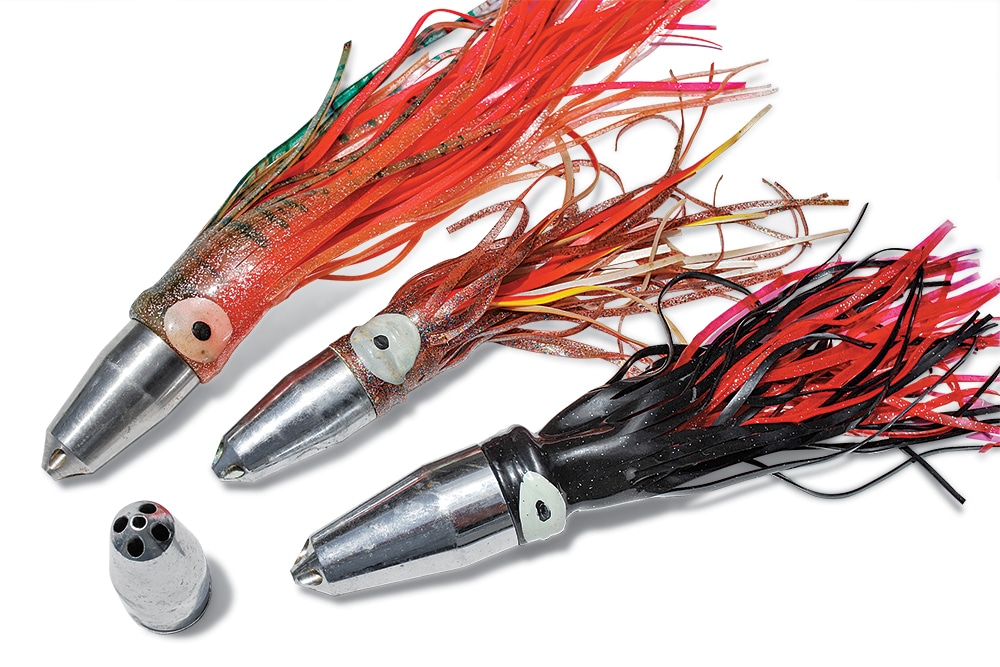
More than fifty years ago, Hawaii troller Henry Nishikawa ignited the jet revolution when he caught a world-record ahi on a metal-headed lure drilled through and through with holes. His 269-pound yellowfin didn’t last long in the record books after anglers in the eastern Pacific discovered a tribe of bigger tuna off Mexico. Yet the IGFA record book is still overwhelmingly Kona on the ladies’ side: Kona catches made by women hold the 16-, 20-, 30- and 50-pound-class marks.
Though Kona waters attract resident schools of yellowfin year‑round, ahi are most abundant in late spring and throughout summer. As schools migrate west to east through the islands, the big runs reach Kauai first by Mother’s Day in May and Kona by Father’s Day in June. When the action is wide open, lucky boats can catch as many as 10 a day, all in the 100- to 220-pound range, by trolling or live-baiting with aku (skipjack tuna) or opelu (mackerel scad). During the rest of the year, ahi specialists target them with green-stick gear, and continue to catch a few each trip.
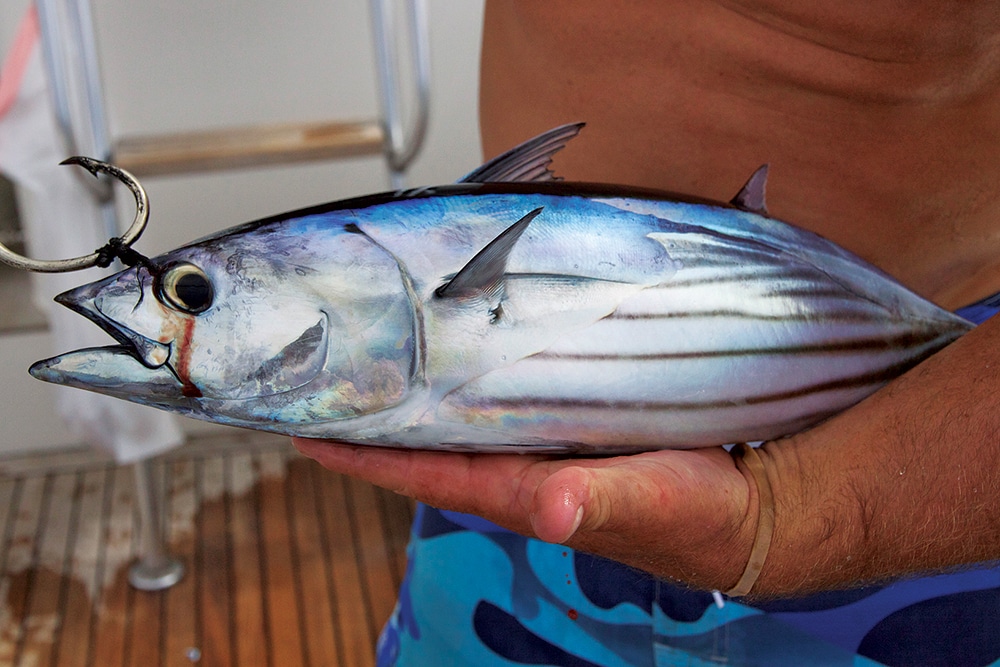
Hawaii’s state record ahi (a July catch) of 325 pounds is unusually large for central Pacific yellowfin tuna. Kona’s biggest ahi each year normally hits 250 pounds (258.5 in 2013). The state record bigeye (277 pounds in July 2013) and the biggest albacore (89.2 pounds in April 2011) both were caught on the Big Island’s windward (eastern) coast. The albacore weighed more than any on the IGFA record list but did not qualify for world-record status because it was caught on commercial-fishing gear. Kona fishermen regularly catch albies (tombo ahi) in the 60s and 70s on sport fishing tackle.
Mahimahi, Hawaii’s Gift to the World
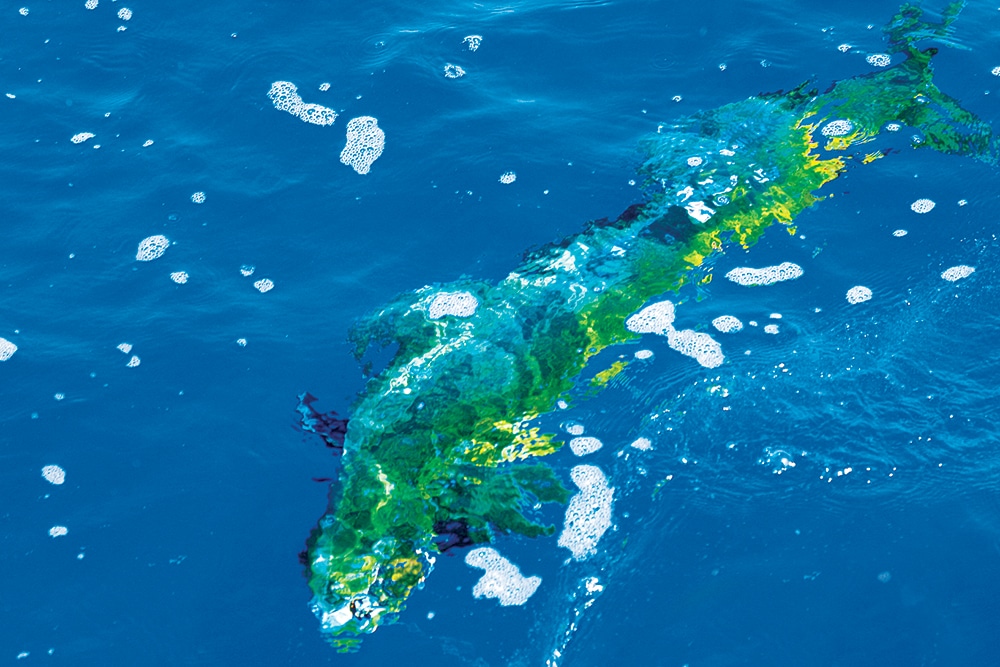
Almost 70 years ago, Hawaii Big Game Fishing Club official George Perry set the 130-pound-class IGFA world record for dolphinfish with a 72.5‑pounder. That record didn’t last long, but the name “mahimahi” is Hawaii’s gift to the world, because it replaces the confusing name “dolphin” on restaurant menus. Though Hawaii has no current IGFA mahimahi records, the state-record 82-pounder confirms the potential. That record fish was a September Kona catch, but mahimahi are available any time the current drags a “floater” within trolling distance.
Mahimahi live up to their name (it means “very strong”), and the brightly colored, agile acrobats do their muscular tricks in Kona waters year-round. Occasionally huge schools gather around flotsam and jetsam for a wide-open bite that can go on for days. Then, skippers gear down to match the catch with sporting 20- and 30-pound-class rods. Unless a Kona skipper finds a floater, mahi are incidental catches on marlin and tuna trips.
By the way, the mahimahi record aside, Perry went on to catch the largest blue marlin in each of the first two Hawaiian International Billfish Tournaments (HIBT). The HIBT became an annual Kona fishing feature in 1959 and soon inspired dozens of other Kona tournaments. During the most popular tournament months of June, July and August, events compete with each other every week
Ono Blitzes, Summer Phenomenon
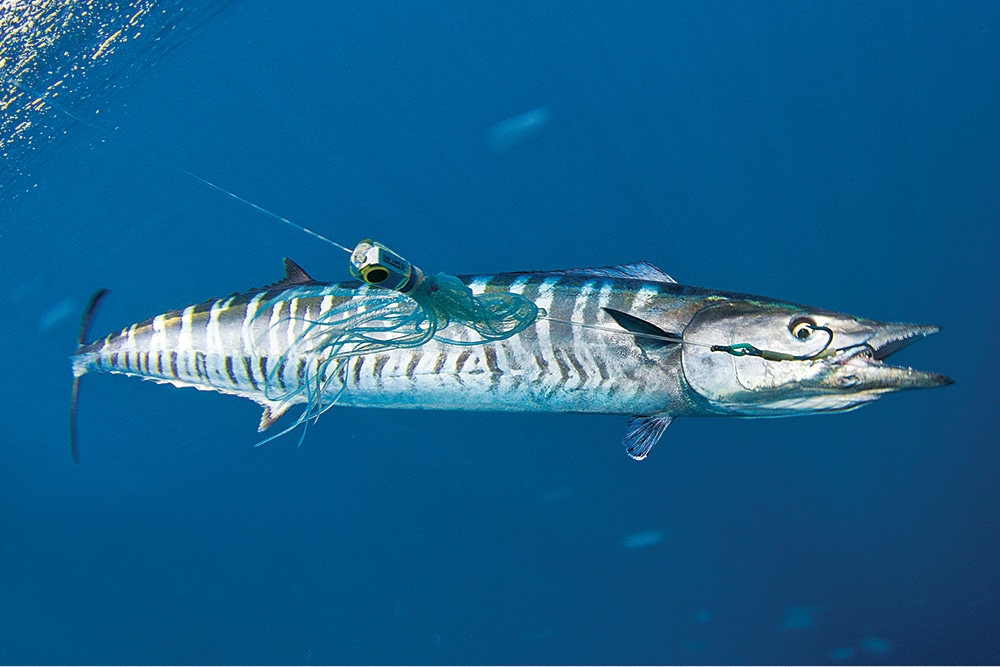
A Guide to Big Fish off the Big Island
Ninety years ago, a mysterious fellow known only as “J.B. Stickney” caught a 124.75-pound wahoo in Hawaii waters to set the world record. That was five years before the IGFA was founded, a time when records were compiled by Van Campen Heilner of Field & Stream and Francesca R. La Monte of the American Museum of Natural history. Ono — what wahoo are called in Hawaii — average 30 to 40 pounds, which makes J.B.’s catch even more extraordinary.
Big ones do show up now and then — state-record-holders Tom Brandt and Sky Mullins surprised their 133.2‑pound ono off the windward coast of the Big Island in December 2000. The major ono run reaches the Big Island in May of each year and hangs around into early September. Some ono are caught year-round, with early morning being your best chance. Kona skippers typically troll the 40-fathom line at the start of each trip to pick up any ono that might be harassing the nearshore bait schools.
To ward off the ono’s sharp teeth, skippers rig their special ono lures with single-strand stainless leaders. Ono slash at heavy-headed subsurface lures like weighted jets and lead-head feathers. On a typical trip specifically for ono, a successful boat might catch three or four fish. In years when ono blitz the summer currents, boats are known to hook as many as 40 on a single trip.
Other fishing areas might see the diversity of big-game fish that Kona has, but few have them in the sizes regularly seen here. In Kona, your next strike could come on any day of the year, in any phase of the moon, at any turn of the tide, on routinely comfortable seas, and be one of the Pacific’s biggest and most exciting game fish.
